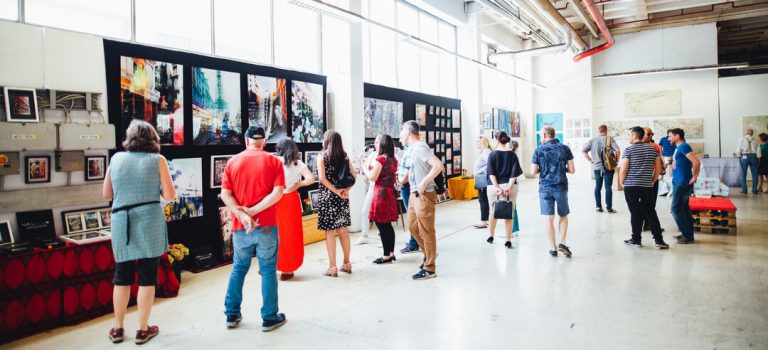Source: Krystopher Scott.
The art world is constantly evolving, and with it, the need for creating art exhibits outside of traditional institutions is becoming more and more important.
The involvement of financial and political institutions in the arts is not a new phenomenon. However, it is important to explore new avenues to reach new audiences and foster a more diverse and inclusive artistic expression. In this article, we will explore why it is important to create programs such as art exhibits outside of traditional arts, financial, or political institutions that exist, with reference to articles from www.artnet.com and bloomberg.com.
Diversifying the Artistic Landscape
Creating art exhibits outside of traditional institutions can help diversify the artistic landscape. Art is not limited to what is typically seen in museums and galleries. There are many talented artists who do not have access to these traditional spaces or create art that does not fit within the traditional mold. By creating new spaces for art exhibits, we can open up opportunities for these artists to showcase their work and express themselves in new and unique ways.
According to an article on www.artnet.com, there has been a growing trend in art galleries and museums to showcase artists from different backgrounds and experiences. This move towards diversification is a positive step towards a more inclusive and representative art world.
Reaching New Audiences
Creating art exhibits outside of traditional institutions also allows us to reach new audiences. Museums and galleries can be intimidating and exclusive to some people, making it difficult for them to feel comfortable exploring and appreciating art. By creating exhibits in new spaces, such as community centers, public spaces, or even online, we can make art more accessible and approachable. This can lead to a more diverse audience, which can ultimately benefit the art world by exposing more people to different types of art.
An article on bloomberg.com highlights how art exhibits in non-traditional spaces have been successful in attracting new audiences. These exhibits often have a more immersive and interactive experience, making it easier for people to engage with the art and appreciate its value.
Fostering Creative Communities
Creating new art exhibit spaces can also foster creative communities. Traditional institutions often have strict guidelines and curatorial standards that can limit the types of art that are displayed. By creating new spaces, we can create a more collaborative and inclusive environment that encourages experimentation and exploration. This can lead to the creation of new ideas and approaches to art, as well as new connections between artists and creatives.
According to an article on www.artnet.com, many galleries and museums are starting to focus on building communities around their exhibitions. This is achieved through creating events and workshops that encourage engagement with the art and its themes.
Challenging the Status Quo
Creating art exhibits outside of traditional institutions can also challenge the status quo. Traditional institutions often have established ways of doing things, and it can be difficult to deviate from these norms. By creating new spaces for art exhibits, we can challenge these norms and create new standards for what art can be and how it can be displayed. This can lead to a more dynamic and innovative art world that is always pushing the boundaries of what is possible.
An article on bloomberg.com highlights how many emerging artists are turning to non-traditional spaces to showcase their work. This move away from traditional galleries and museums is a way for artists to challenge the status quo and create new avenues for the exhibition of their work.
The Wrap-Up
Creating art exhibits outside of traditional institutions is an important step towards a more diverse, accessible, and dynamic art world. By diversifying the artistic landscape, reaching new audiences, fostering creative communities, and challenging the status quo, we can create a more inclusive and innovative art world that benefits everyone.








